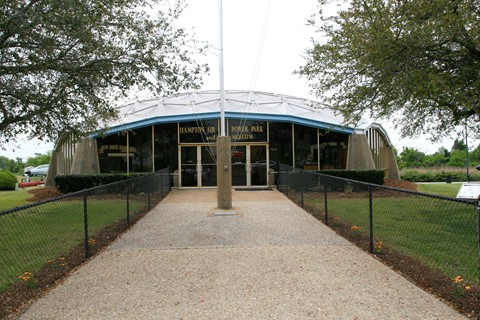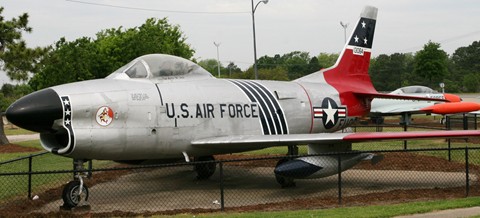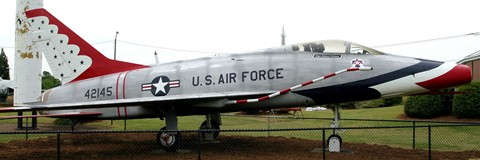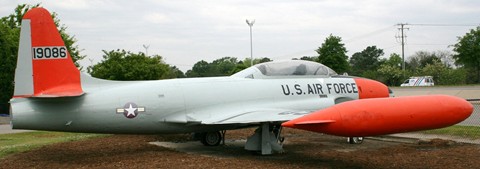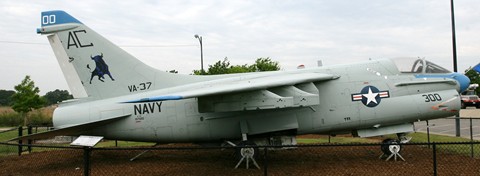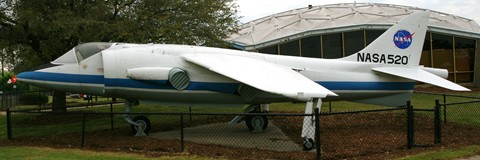|
Hampton Air Power Park
The Hampton Air Power Park is located on West Mercury Blvd., which puts it within a few miles from the main gate of Langley AFB, VA. Entrance to the park is free and it’s open every day from 9AM to 4:30PM. Donations are, of course, welcome. The last time we visited this park, the aircraft did not have fences around them, but due to some local vandalism, the park is now under a more watchful eye, and the planes are more protected from damage. Some kids tend to think of this as a playground rather than something that should be honored and respected. All the aircraft are in reasonably good shape, but the same cannot be said for the rocketry that adorns the property. The rockets and missiles have seen better days. Some of them are in bad shape. That being said, the military aircraft on display are varied, from a Super Sabre displayed in Thunderbird colors to a Kestrel jump jet from NASA. If you are in the Hampton/Newport News vicinity, check out this park and museum.
There were 981 F-86Ds converted to the F-86L like this one (51-3064) at Hampton Air Power Park. It is marked in the colors of the 37th Fighter Interceptor Squadron, 14th Fighter Interceptor Wing. The 37th lives on as the 37th Fighter Training Squadron located at Columbus AFB, MS. They fly the Raytheon Texan II.
Pictured above is the F-89J Scorpion (52-2129). The J-model is an upgrade of the F-89D, which included replacing the wing tip missile pods with fuel tanks. Photo by Horace Sagnor.
This F-100D Super Sabre (54-2145) is painted up in Thunderbird markings. The USAF demonstration team flew the F-100C from 1956 through 1963, and the F-100D from 1964 through 1968.
The Lockheed T-33 was the two-seat trainer version of the P-80 fighter of the same name. It is still in service with foreign air forces. Shown above is the T-33A (51-9086). Photo by Horace Sagnor.
The US Navy is represented at the Hampton Air Power Park by this A-7E Corsair II (157506) that is incorrectly marked as 157500. It is adorned in the colors of Navy squadron VA-37.
This F-101F Voodoo (56-0246) was converted from the F-101B two seat fighter bomber as a dual control trainer. A total of 152 such conversions were made. This is not to be confused with the 79 TF-101Bs which were built as trainers.
The F-105 Thunderchief was the largest single engine fighter the US Air Force ever flew. This one is an F-105D, which was the most popular with 610 produced. One Thunderchief, with one pilot, carried a greater bomb load than a ten man bomber crew of World War II. Photo by Horace Sagnor.
You don't see many of these in US aircraft museums. It looks like a Harrier, but it is actually the XV-6A Kestrel (64-18268). It is one of six such aircraft built by Hawker-Sidley in Great Britain for evaluation by the US Army, Air Force, and Navy. Four of these aircraft were tested by the Air Force at Edwards AFB while two were transferred to NASA. This is one of those two. The other NASA Kestrel is shown on our VASC (Virginia Air and Space Center) page. Neither the Army nor the Navy tested the aircraft. Navigation IndexReturn to the top of this Hampton Air Power Park page.
|
